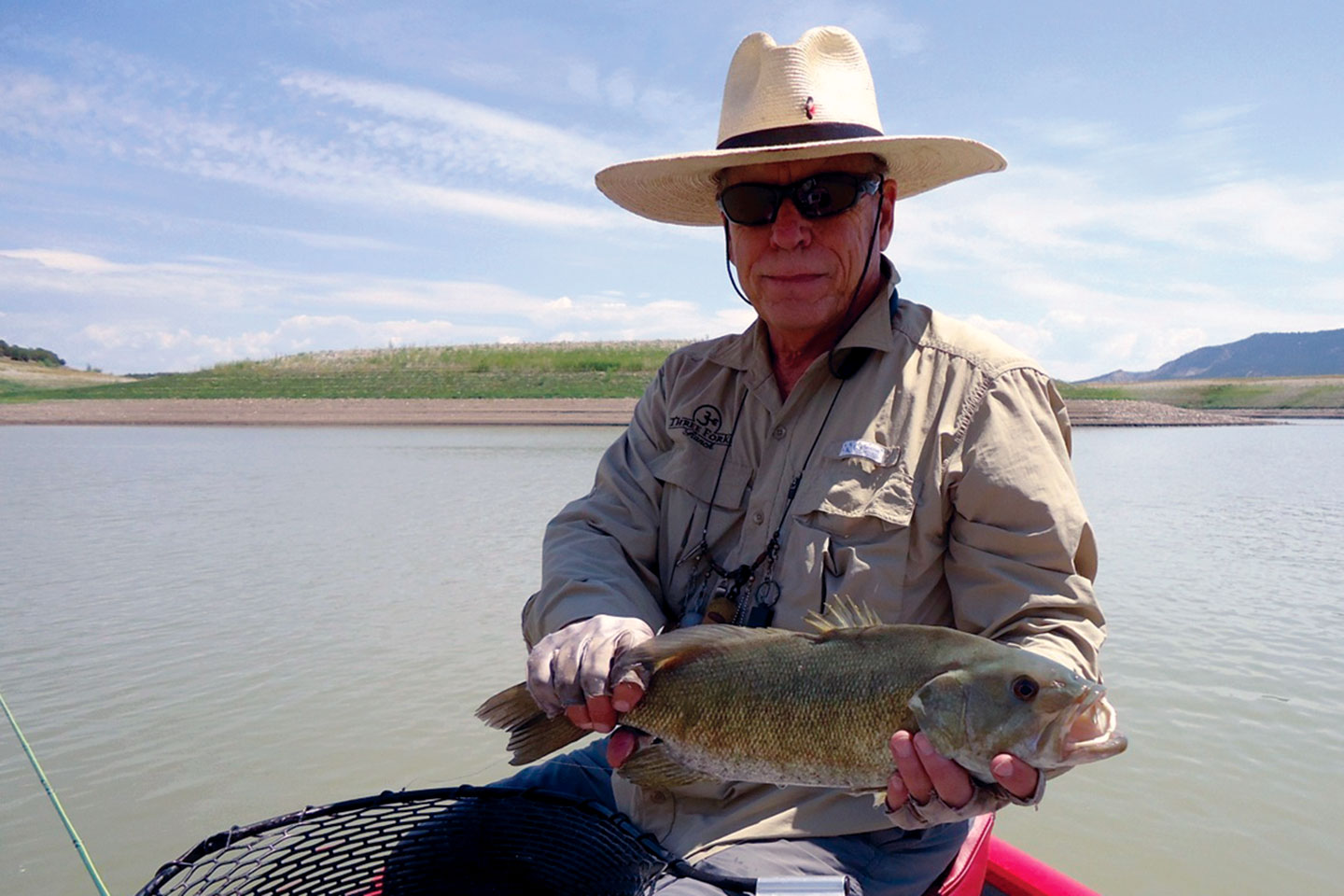So far, this has been a really busy summer. My calendar shows “non-fishing stuff” going on almost every day since the first of June. I’m an old, retired curmudgeon; it shouldn’t have been that busy. But, with the great snow year and timely rains that produced epic runoffs, I’d been left with fly fishing from a bass boat and a float tube. Not a bad way to spend a day, but streams and brook trout were calling. Since the streams were still not fishable, I went to plan B, fly fishing for brook trout in beaver ponds.
To steady my hand and calm my nerves, I took a one-day road trip. I pulled out my bamboo fly rod, put a box of dry flies in my vest, and headed north to Silverton. Along the way I observed: the Animas in Durango is still high-fast-and-brown, Hermosa is still fast, Cascade is fast, Lime Creek as it flows under highway 550 looked fishable, Mineral Creek is fast and off color, and the Animas through Silverton is ripping. That would be enough to discourage a normal fly fisherman. I’m not normal.
I drove north through Silverton, past the suburb of Howardsville, headed for my favorite pull-off. Along this short distance I watched a bull, cow, and calf moose walk across the road. Then when booting and suiting, I saw an eagle fly overhead. It was lining up to be a great day. It’s at this point that I came up with an idea to make it a really fun day. I would change flies after every third or fourth fish. That way; I could see how many types of dry flies these brook trout would take. I also made a rule the new fly had to be a completely different fly. Not just a size smaller or larger.
The reason I was after only brook trout is that they are my favorite trout to catch. They are aggressive beyond words, love dry flies and are drop dead beautiful. And, if I’m going to eat a wild trout or two, I think they taste better than the other species.
I started with my all-time favorite dry fly, a Royal Wulff. After about twenty minutes, I was changing flies. I then went to an Elk Hair Caddis. Bear in mind, there were no caddis in the air; that lasted another twenty minutes. What next? I scanned my box and pulled out a size 14-pink and gray foam bug. It also had short rubber legs, elk hair for wings, and a white parachute. Ten minutes later, I was tying on new tippet and lighting a fresh cigar. Having fun can be tiring. A Parachute Adams was next. It was followed by different varieties and species, in different sizes, for the rest of the day.
Fly fishing these beaver ponds with a bamboo rod made me slow down and take a deep breath. I can’t hurry a cast with a soft bamboo rod. I have to wait on the back cast, and deliver the fly smoothly going forward. Then a nice easy motion, up, to set the hook. That is followed by releasing the brookie, relighting my cigar and making a new cast.
If you’ve never fly fished in a beaver pond there a few things you should be aware of. Still waters do run deep. Just because you can see the bottom of the pond, doesn’t mean it’s shallow. Be careful with your first step. Even if the silt is only twelve inches from the surface, it can be another two feet down to a firm footing. Know that two feet of mud can hold your foot and leg in a giant vise-like grip. I always test the bottom with my wading staff.
If, like me, you’re in need of a brook trout outing and are ready to spend the day de-stressing and laughing, head north. You’ll be glad you did.

